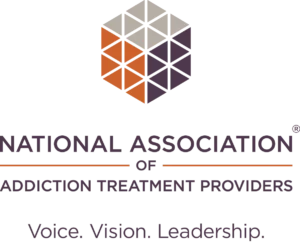

Brain Optimize: Improve your Brain Function in Recovery
Brain Optimize: Improve your Brain Function in Recovery
Table of Contents
There is research that supports the idea that brain training exercises can improve brain function. This blog post explores the topic of brain optimization and offers strategies for optimizing your brain to achieve peak performance.
What Is Brain Optimization?
Brain optimization refers to the process of challenging the brain to develop optimal fundamental skills that are necessary for learning. With an optimal brain, your ability to perform mental activities is maximized. All of these strategies can be applied to almost anything, including careers, relationships, learning, and more.
The two critical elements related to improving the human brain are neurogenesis and neuroplasticity. Neurogenesis refers to the creation of new brain cells while neuroplasticity indicates putting those new brain cells to good use.
Knowing the Brain Type
Research has identified five primary brain types that impact a person’s personality, how they behave, and how they relate to others.
The five basic brain types include:1
The balanced brain
The spontaneous brain
The persistent brain
The sensitive brain
The cautious brain
The more scans medical professionals studied, the more they realized that certain brain patterns correspond to personality types.
The study has a major significance in the field of mental health treatment. It shows that a one-size-fits-all treatment plan for patients struggling with mental health issues – such as depression and anxiety – will not be effective. The best treatment plan, the right diet, and the most effective exercises for these patients will depend on their brain type.
What Is Brain Mapping?
Brain mapping is a brain function mapping process in which a trained researcher uses specialized equipment and software to carefully measure and map out the various regions and neural pathways within the brain. In short, brain mapping can help reveal what is happening inside a person’s brain.
With the help of brain function mapping, researchers can detect which brain areas are not functioning properly and may cause neurological issues. They can identify the root cause of any psychological or physiological problem the patient may be facing.
Brain function assessment can also help medical professionals develop targeted treatments for any given disorder or condition. Using the brain map, a brain professional can create a treatment protocol that targets the specific areas of the brain that are causing the patient’s symptoms.
Benefits of Brain Mapping
Brain optimization comes with a range of benefits that include:
Enhanced memory and focus
Decreased impulsivity and anxiety
Better mental clarity
More restful sleep
Improved mood
Peak Performance
Brain optimization can be beneficial for individuals who want to improve their cognitive brain functioning. Capabilities such as memory, processing speed, and decision-making are boosted to optimal levels.
Other Conditions
Deep brain mapping can also help in the treatment of mental health conditions such as anxiety and depression. By pinpointing abnormalities in the areas of the brain responsible for emotions and stress, doctors can understand and retrain the anxious and depressed brain.
There is also promising evidence that brain training may help address certain types of impairments. In 2020, the FDA approved a brain training game that aims to help treat attention deficit hyperactivity disorder (ADHD).2
What Is Peak Brain Performance?
High cognitive performance or “peak brain performance” refers to the achievement of optimal and effective functioning of cognitive capabilities and executive functions.
When your brain reaches peak performance, it takes in information and processes it faster and more efficiently. Typically, this functioning means that you become able to solve a difficult problem more quickly and effectively without having to overthink it.
Once you begin to optimize your brain, you can become smarter, faster, and better at accomplishing your goals and meeting your needs.
Ways to Peak Brain Performance
- Be mindful: Meditation will increase your productivity, boost your creativity, and improve your relationships. Meditation has been proven to increase your brainpower by improving concentration, memory, brainpower, and emotions.
- Optimize sleep: Sleep is crucial for peak performance. Being sleep-deprived reduces your analytical capacity, and you have a hard time regulating your emotions.
- Eat well: Your brain needs the proper nutrition to perform at its best. Eating a wide variety of foods is one of the most important things you can do to optimize your brain. Consider adding some healthy foods into your diet like a piece of dark chocolate, fresh vegetables, lean meats, eggs, and healthy fats such as olive oil.
- Play games: Games can engage your prefrontal cortex and help you build memory and self-awareness. Some of these training games include Lumosity, Elevate Brain Training, NeuroNation, Fit Brains Trainer, and Peak.
- Regulate negative emotions: Your brain has difficulty controlling your negative feelings if you are constantly feeding them with stressful thoughts and anxiety. This thinking process can lead to you spending a lot of mental energy on your negative feelings and becoming too distracted to perform well. Learn how to be more aware of your emotional state and control it properly to regain cognitive control.
- Be open to new mental and social experiences: You can slow down the process of cognitive decline by being open to new experiences beyond your comfort zone.
- Neurofeedback: A type of therapy that lets patients see their brain activity in real-time and use this to practice self-regulation.
What Is Brain Training?
Brain training is a way of increasing a person’s cognitive skills by following regular mental activities. The Brain Coaching Institute defines brain training as “repetitive, task-relevant, skill-building exercises that focus on real-world learning and improve brain function and cognitive abilities.”
This approach may improve a person’s mental abilities such as:
Cognitive flexibility
Problem-solving
Attention
Reasoning
Working memory
A person’s brain may be trained in various ways, including through physical exercise, games, social interactions, and creative activities3. Another research-backed way to train the brain includes neurofeedback therapy.
What Is the Process for Neurofeedback?
Neurofeedback is a brain training method you can use to optimize your brain performance by training it to resist interference and tune itself to enhance neuroplasticity and learning. This technique is based on the work of famed cognitive scientist and futurist Daniel H Wilson, who developed and popularized this approach to neurofeedback.
During neurofeedback therapy, a patient is connected to a computer through wires and sensors that help the practitioner monitor the brainwave activity. Feedback is communicated to the patient with auditory and/or visual signals. These signals help the patient recognize when desired and undesired brain waves are being produced. Gradually, the patient can learn how to self-regulate more efficiently and effectively in any situation.
How to Prepare for a Neurofeedback Session
Consider doing the following to help ensure that your session will go smoothly:
Get a good night's sleep.
Eat a balanced meal or snack 1-3 hours before your session.
Wash and rinse your hair and avoid using styling gels on the day of your session.
If you are wearing vision-correction devices such as contact lenses, be prepared to remove them during your session.
Choosing the Right Center for Brain Training
It is of critical importance that you choose the right center for brain training with care. Although many centers offer high-quality services, many unqualified practices provide inferior treatment at a lower price.
When choosing a brain training center, make sure you choose a provider with the following:
- Licensed Health Care Professional: The provider should have a license to assess and treat the condition for which you are seeking treatment. For example, if you need treatment for depression, make sure your chosen provider has a license in mental health.
- Neurofeedback Credentials: Practitioners who provide neurofeedback therapy should have completed a comprehensive training program and complete continuing education yearly. In addition, look for a provider who is certified by the Biofeedback Certification International Alliance.
- Expertise and attention: A qualified practitioner should be able to explain your symptoms and connection to brainwave functioning in a way that you understand. They should be able to demonstrate the changes that are occurring in your brain wave functioning. Moreover, a qualified practitioner will typically stay in the room with you to properly monitor your brain waves moment-to-moment, making adjustments as needed.
Resources
- https://brainmd.com/blog/best-foods-and-supplements-for-your-brain-type/https://www.amenclinics.com/blog/what-your-brain-type-says-about-how-youre-responding-to-the-coronavirus-pandemic/
- https://www.fda.gov/news-events/press-announcements/fda-permits-marketing-first-game-based-digital-therapeutic-improve-attention-function-children-adhd
- https://www.cambridge.org/core/journals/international-psychogeriatrics/article/abs/cognitive-leisure-activities-and-future-risk-of-cognitive-impairment-and-dementia-systematic-review-and-metaanalysis/62DC1367E760A45970FE207859D69E45









